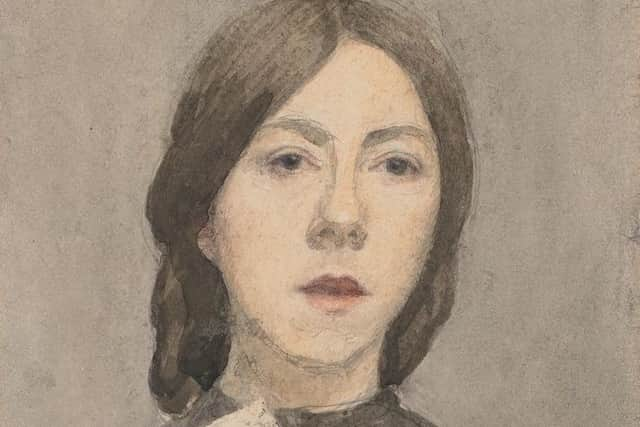Gwen John in focus at Chichester’s Pallant House Gallery


Running until October 8, Gwen John: Art and Life in London and Paris will bring together more than 120 works including paintings, watercolours, drawings and sketches, as well as previously unseen archival material and personal belongings.
Spokeswoman Yasmin Hyder said: “Chronologically tracing Gwen John’s 40-year career, the exhibition will place her art in relation to the two cities where she chose to live and work: from her early years at the Slade School of Fine Art in London and subsequent training under James Abbott McNeill Whistler at the Académie Carmen in Paris, to her permanent move to Paris in 1904 and the life she built as an artist there. The exhibition will draw on new research into John’s connections to her contemporaries and her personal library acquired by the National Library of Wales. It will also explore the relationship of her work to that of her brother, Augustus John and Auguste Rodin with whom she had a ten- year affair. John’s connections with her other contemporaries and women artists of her time, such as Mary Constance Lloyd, Paula Modersohn-Becker, Elinor Monsell (later Darwin), Ida Nettleship and Ursula Tyrwhitt will be revealed, countering interpretations of the artist as an isolated recluse.
Advertisement
Hide AdAdvertisement
Hide Ad“The exhibition is curated by writer Alicia Foster and will coincide with the publication of a major biography by Foster of the same name published by Thames & Hudson. The exhibition loans are supported by the Weston Loan Programme with Art Fund.
“The exhibition will begin in the late 1890s when John began her studies in London and first visited Paris. This period of intense training would be crucial to John’s art as she found herself immersed in the culture of the art schools at the time and the galleries and museums of both cities. Her earliest works will be seen alongside those of her Slade contemporaries, her teacher Henry Tonks and Whistler who guest lectured at the Slade. Highlights will include John’s early painting Landscape at Tenby with Figures (c1896-1897), a rare portrait drawing of her at the Slade by Augustus John, a never-before-exhibited drawing of the artist from Nettleship’s Paris sketchbook, and Dorelia in a Black Dress (1903-4) which John painted on her travels.
“In 1904 John moved to France permanently. There she pursued her fascination with interior spaces and their inhabitants. Rather than an idiosyncrasy of John’s, capturing the interior was an obsession for many artists of the era. Her rarely seen watercolour Woman Dressing (c1907) will be paired with Édouard Vuillard’s Modèle assise dans un fauteuil, se coiffant (Model Seated in a Chair, Combing Her Hair) (c1903).
“John’s affair with Rodin and her work as his model had a profound effect on her. His sinuous, startling life drawings will be shown alongside John’s studies of cats, which marked a new sureness and fluidity in her drawing.
Advertisement
Hide AdAdvertisement
Hide Ad"These works signal the two artists’ difference in status: the famous sculptor with access to many life models and studios, contrasting with the woman living and working in one room. John’s self-portrait watercolour Autoportrait à la Lettre (c1907-9), which she made for Rodin, and her watercolour painting of herself as a nude will also be on display, revealing her experiments in identity at this time. John’s presence in Belle Époque Paris will be underlined by Rodin’s portrait of her, the plaster Head of Gwen John (Head of Whistler's Muse) (c1906) as well as works by women she knew, including Tyrwhitt’s terracotta Head of Gwen John (c1907). John’s own gaze as an artist focussed almost exclusively on women and the exhibition will include portraits from her early Paris years including La Chambre sur La Cour (c1907) and Chloe Boughton Leigh (1910-14).”